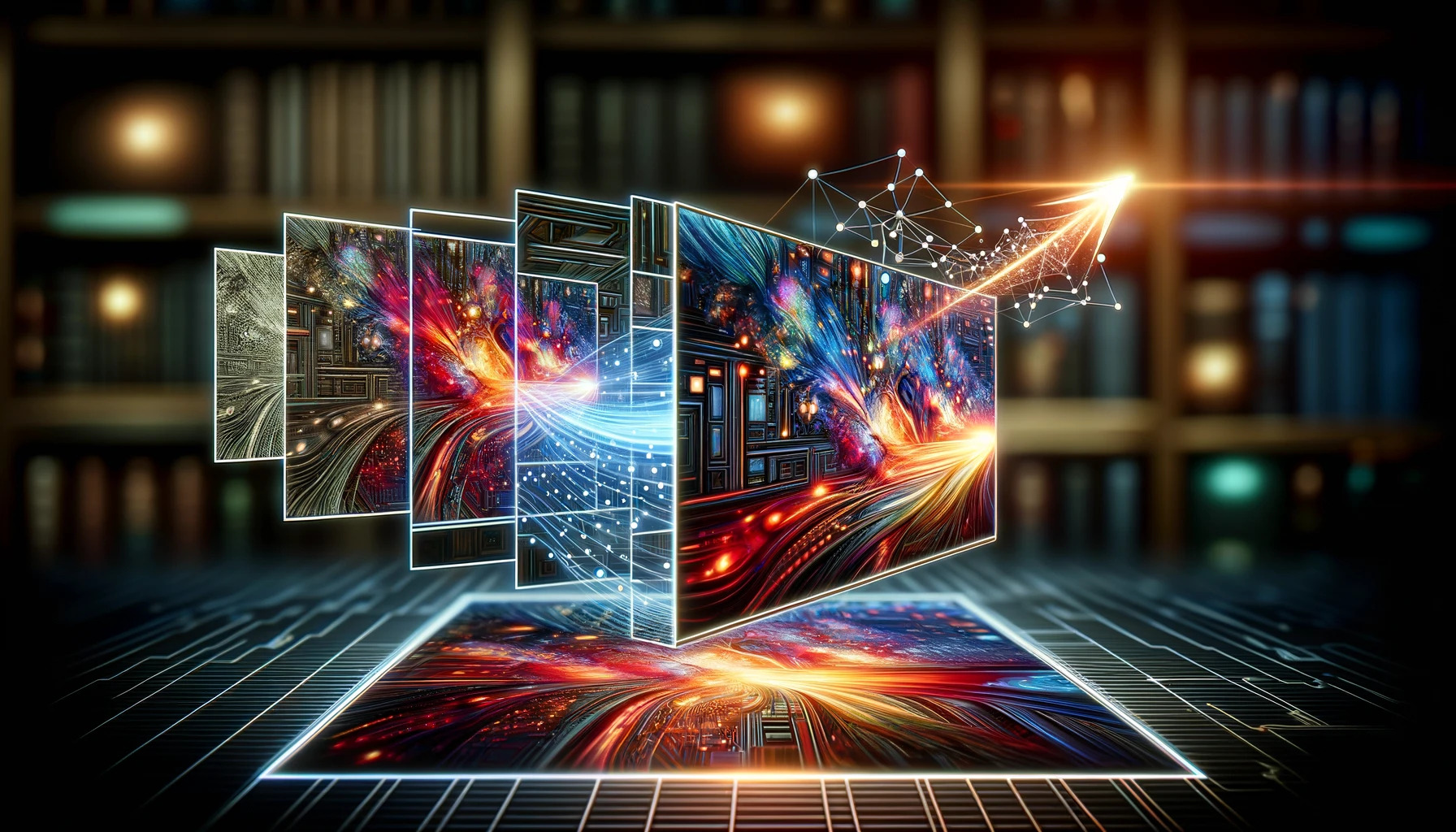Leveraging Deep Learning for State-of-the-Art Image Upscaling
By Troy
Published March 8, 2024
 Leveraging Deep Learning for State-of-the-Art Image Upscaling
Leveraging Deep Learning for State-of-the-Art Image Upscaling
Deep learning, a branch of artificial intelligence, transforms the way we upscale images to meet the rising demand for high-quality digital content. As display resolutions climb, upscaling images without losing detail or quality is crucial. This article delves into how deep learning is leveraged to achieve state-of-the-art image upscaling, ensuring images are not just bigger, but profoundly better.
The Essence of Deep Learning in Image Upscaling
At its core, deep learning applies neural networks with multiple layers (hence "deep") to process data in complex ways, mimicking the human brain's approach to learning. When applied to image upscaling, deep learning algorithms analyze vast datasets of images to learn how to accurately enhance low-resolution images into high-resolution counterparts. This process involves not just simple pixel replication but adding new, contextually relevant details to images.
The Breakthrough of Advanced Upscaling Techniques
The advent of advanced upscaling techniques powered by deep learning has marked a significant leap from traditional methods. Unlike conventional upscaling, which often leads to blurred or pixelated images, deep learning-based methods generate clear, detailed images. This improvement is because these algorithms can infer and recreate the textures and details that would be present in a higher-resolution image, a feat not possible with basic upscaling techniques.
How Deep Learning Upscaling Works
- Data Learning: The cornerstone of deep learning upscaling is the AI training models for upscaling. These models undergo extensive training with countless pairs of low and high-resolution images, learning the nuanced patterns and textures that define high-quality visuals. This extensive training phase allows the models to predict and replicate the intricate details that would be present in a higher-resolution version of any given image, thereby setting the stage for remarkably improved upscaling results.
- Feature Extraction: This phase involves the algorithm dissecting the low-resolution image to pinpoint and extract significant features. It's a critical process where the intelligence and adaptability of the AI model come into play, determining the success of the subsequent upscaling.
- Detail Addition: Here, the algorithm employs the knowledge gained from AI training models for upscaling to intricately add details to the image. This is where the true magic of deep learning shines, as it synthesizes textures, edges, and gradients, transforming the upscaled image into something that closely resembles a naturally high-resolution photo.
- Refinement: In the final step, the upscaled image is meticulously refined. This process ensures the accuracy of the added details and adjusts the image to closely match the quality expected from a true high-resolution image.
Key Technologies Driving Deep Learning Image Upscaling
Among the forefront of innovations are super-resolution algorithms for upscaling, which have fundamentally transformed our approach to enhancing image quality. These algorithms, especially when integrated within Generative Adversarial Networks (GANs) and Convolutional Neural Networks (CNNs), enable a leap in the clarity and detail of upscaled images. Super-resolution goes beyond traditional upscaling by not just enlarging pixels, but by reconstructing the high-resolution image with an unprecedented level of detail, effectively bridging the gap between imagined and actual high-resolution visuals. The precision and efficiency of these algorithms are pivotal in pushing the boundaries of what's possible in image upscaling today.
Advantages of Deep Learning Image Upscaling
- Enhanced Image Quality: The most apparent benefit is the significant improvement in image quality. Deep learning algorithms can generate high-resolution images that retain the nuances of the original, avoiding common issues like blurring or artifacts.
- Efficiency: With the computational power available today, deep learning models can upscale images quickly and efficiently, making high-quality upscaling accessible for real-time applications, such as streaming services.
- Scalability: Deep learning models can be trained to improve over time, adapting to new types of images and resolutions. This adaptability ensures that upscaling technologies remain cutting-edge.
Applications of Deep Learning Image Upscaling
Deep learning-based image upscaling has wide-ranging applications across various industries:
- Entertainment and Media: For remastering old movies or improving the quality of streaming content.
- Video Games: Enhancing textures and backgrounds to provide gamers with more immersive experiences.
- Surveillance: Improving the clarity of CCTV footage, aiding in clearer identification and analysis.
- Medical Imaging: Enhancing the resolution of medical images for better diagnosis and analysis.
Challenges and Future Directions
While deep learning has significantly advanced the field of image upscaling, it is not without its challenges. High computational costs and the need for extensive, diverse datasets for training are notable obstacles. However, the development of custom upscaling scripts offers a promising avenue for overcoming these hurdles. These scripts, tailored for specific types of images or particular upscaling needs, can optimize the upscaling process, making it more efficient and adaptable to various scenarios. As research continues, these custom solutions not only address the limitations faced by current technologies but also pave the way for more personalized and flexible upscaling solutions, heralding a new era in image enhancement technologies.
Conclusion
Leveraging deep learning for image upscaling represents a significant advancement in how we enhance visual content. The technology not only promises clearer, more detailed images but also opens up new possibilities in various fields, from entertainment to healthcare. As we continue to refine these algorithms, the future of image upscaling looks brighter than ever, promising visuals that are not only larger in size but unparalleled in quality.